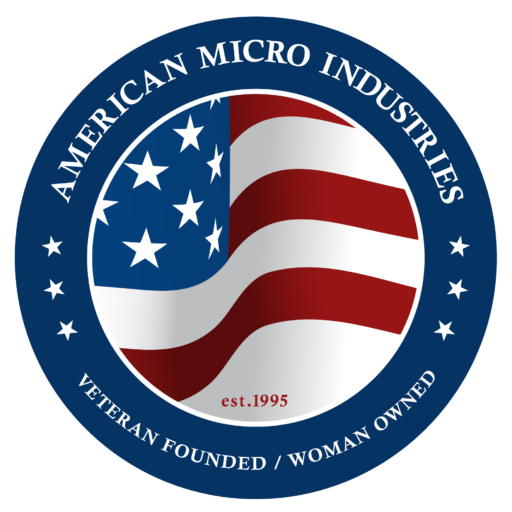

While many individuals are looking for ways to positively impact the environment in their personal lives, the biggest difference often comes from businesses adopting eco-friendly strategies. Many companies have realized the benefits of sustainability. A third of businesses do this to reduce costs, but other advantages include increased customer support and loyalty since people are more likely to buy from sustainable businesses. One area where recycling and other eco-friendly practices are becoming increasingly popular is the computer numerical control (CNC) machining industry.
Learn About Our CNC Machining Services
CNC machining is a technologically advanced process for creating items and parts from a range of materials, such as metal or plastic. Instead of manually cutting parts, operators can use CNC codes to accurately cut and shape materials.
CNC uses computer-controlled machines to cut, drill and turn materials, aiding in faster and more effective production. These machines often yield more accurate results, but they’re also better suited to complex processes that may be challenging or time-consuming to do by hand.
The circular economy is a sustainability-based system that focuses on reusing materials to reduce waste. Instead of disposing of products once they’ve been used, businesses implementing a circular economy system are encouraged to find ways to creatively extract more resources and continually use them for as long as possible.
This sustainable practice helps the economy, as businesses waste fewer resources. Companies also benefit since they get more use out of items and thus experience cost savings. An example of the circular economy in a household is repairing damaged clothes instead of throwing them away and using food scraps for compost. In businesses, however, implementing a circular economy may be more challenging.
Learn About Our CNC Machining Services
Any process that involves creating parts from materials generates waste, making it an ideal candidate for the circular economy and recycling efforts. While 75% of waste is recyclable, most Americans only recycle 34% of it. However, CNC is generally more sustainable than other methods of creating parts since its precise nature leads to fewer mistakes and fewer wasted resources.
Let’s take a closer look at how the circular economy and CNC machining intersect.
Any process that takes large pieces of materials and cuts them down into smaller parts is bound to generate some waste. However, CNC machining often has lower levels of waste. Firstly, because computer numerical control uses coding to guide machines across a precise route, they’re much less prone to errors than humans cutting materials by hand.
When material is cut incorrectly, it often becomes unusable and creates excess waste. CNC machining can operate under tight tolerances, meaning it can cut pieces to exact specifications. This reduces the risk of this and also lowers the amount of excess created during processing.
CNC machining’s role in the circular economy is to waste fewer resources by determining the best patterns to cut to get as many parts out of one piece of material.
Learn About Our CNC Machining Services
Since CNC machining allows greater control over machines due to coding, you can optimize the route it follows to ensure that it performs its task as quickly as possible, thus using less energy for cutting, drilling, and other processes. The increased speed of CNC machines means you spend less operational time using valuable resources like power.
If you only perform small-scale processes, you can also opt for a more compact CNC machine. The smaller your machine, the less energy it uses.
America’s daily industrial water usage is more than 18 billion gallons a day, so it’s clear that businesses need to reduce their water consumption if they want to positively impact the environment.
Some CNC machines offer dry machining, which means they operate without coolant and thus use less water. You can also look into machines with a closed-loop system. These systems constantly reuse coolant, cutting back on overall water usage.
Learn About Our CNC Machining Services
Recycling in CNC machining practices is one of the most effective sustainable strategies, which means that using green materials made from recycled resources is a good solution. This is especially true since many CNC machines are compatible with various materials, including recycled ones.
Businesses using CNC machines can also opt for biodegradable plastics when selecting materials for part creation. Since CNC machines are often used not only for cutting parts but also for finishing them, companies can look into eco-friendly coatings so that the entire part is made from greener sources.
Using CNC machining in part production is effective on many levels. You can use recycled materials for your parts and recycle any excess material left over after production to create more parts, thus implementing a closed economy system.
While cutting back on power usage and being more energy-efficient is an excellent first step, companies with CNC machines can also look into renewable energy sources so that, when they do need to operate their machines, they’re lowering the harm they cause the environment.
Many CNC machines are compatible with renewable power sources, so you can integrate solar and wind power to reduce the number of finite energy sources you use during operation.
Even though the main driving force behind going green for most businesses is to help the environment, it does often mean changing how you do business, so you need to look at it from a corporate perspective as well. If you’re wondering why you should use sustainable practices in your CNC machining, here are some significant advantages that your business will experience by implementing eco-friendly methods:
Learn About Our CNC Machining Services
At American Micro Industries, we have the experience needed to help you with your CNC needs. We’re a veteran-founded company with our headquarters in Pennsylvania, and our solutions can help you improve your processes and boost productivity.
Whether you need a competitive edge or want to enhance your skill set, we can help. Look at our services to see what we can offer you, or contact us for more information.